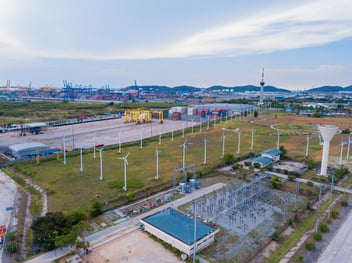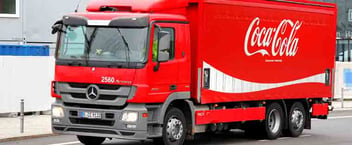
Route optimization can improve fuel performance logistics metrics and KPIs for urban last mile delivery logistics, improving fleet efficiencies.
The dynamic nature of cities forces supply chain managers to measure their performance much more carefully, especially in urban legs and last mile deliveries.
According to the MIT Logistics Lab:
“If companies can find better ways to navigate the last mile in traffic-clogged big cities, they will open up new business opportunities in a vast and growing market.”
Route optimization is doing wonders. However, supply chain managers need to refocus how they are measuring logistics costs and performance in these particular types of deliveries.
Matthias Winkenbach, Director of the MIT Megacity Logistics Lab, says:
“Managers typically evaluate delivery network performance using a limited number of basic Key Performance Indicators such as total time and distance traveled, and the percentage of goods delivered. This is useful information, but only provides an aggregate view of last-mile operations.”
Route optimization is highly important to find ways to travel fewer distances, and significantly reduce costs on fuel.
One of the most critical supply chain metrics in urban settings involves the use and performance of the fuel, as last mile urban logistics generally service smaller volumes, multiple destinations and smaller economies of scale in a single day.
On inter-urban legs, supply chain managers only have to be mindful of the cost of fuel. However, urban delivery legs force managers to pick carefully the route their fleet takes and the hours of the day they approach a destination, to save fuel and reduce costs.
How much is your fleet spending now per kilometer or mile traveled?
With this KPI, you are calculating your costs per distance traveled, looking either for the total for your fleet or measuring specific legs or deliveries.
Let’s take two delivery fleets of 5 trucks each, moving a total of 80 kilometers a day.
| Fleet 1 | Fleet 2 |
|---|---|
| Services large depots along highways, turnpikes, and avenues. | Services small stores in the city center. |
| Uses delivery windows outside rush hour. | Is forced to deliver in the middle of rush hour. |
| Deals with just a few spots of congestion and traffic jams. | Deals with numerous traffic jams during the entire journey. |
Would their fuel performance be the same?
Certainly not.
| Fleet 1 | Fleet 2 |
|---|---|
| Uses 16 liters of fuel in 80 km | Uses 32 liters of fuel in 80 km |
| 5 km per liter | 2.5 km per liter |
Would this be cost efficient?
Let’s imagine that -in an average Latin American country- a liter of diesel fuel costs an average of 60 cents, and both fleets have to service the same route for one month.
| Fleet 1 | Fleet 2 | ||
| 80 km x 25 days x 5 trucks= 10,000 km a month each truck |
|||
| 10,000 km 5 km/liter x 60 cents = US$1,200 |
10,000 km 2.5 km/liter X 60 cents = US$2,400 |
||
| US$1,200 in fuel 10,000 km. |
US$2,400 in fuel 10,000 km. |
||
| 12 cents per kilometer | 24 cents per kilometer | ||
What if we could reduce fuel costs with effective fleet management?
Even though traffic jams were a natural part of the delivery, the company noticed that by using a route optimization software, they where able to plan more effectively their routes, being able to reduce the amount of kilometers / miles traveled and therefore reduce total fuel costs, How does this work? The software assigns each order to an available vehicle, considering all the commercial or operational restrictions your customers might ask for; it gives away the optimal delivery route. By following these new routes, fleet 2 was able to reduce significantly the kilometers traveled.
What other metrics do you think are relevant to improve their fleet efficiencies? How has your supply chain saved on fuel?



